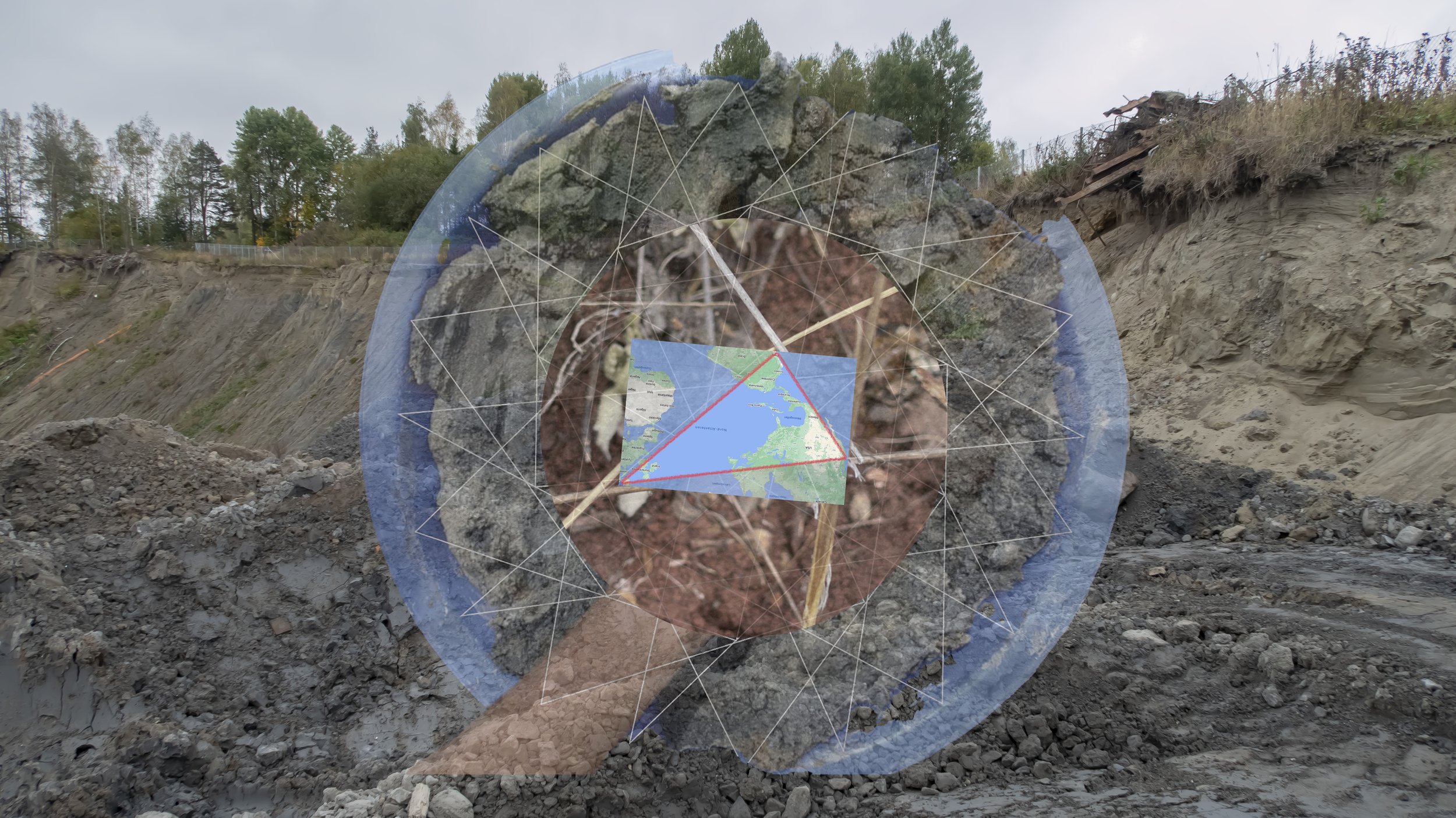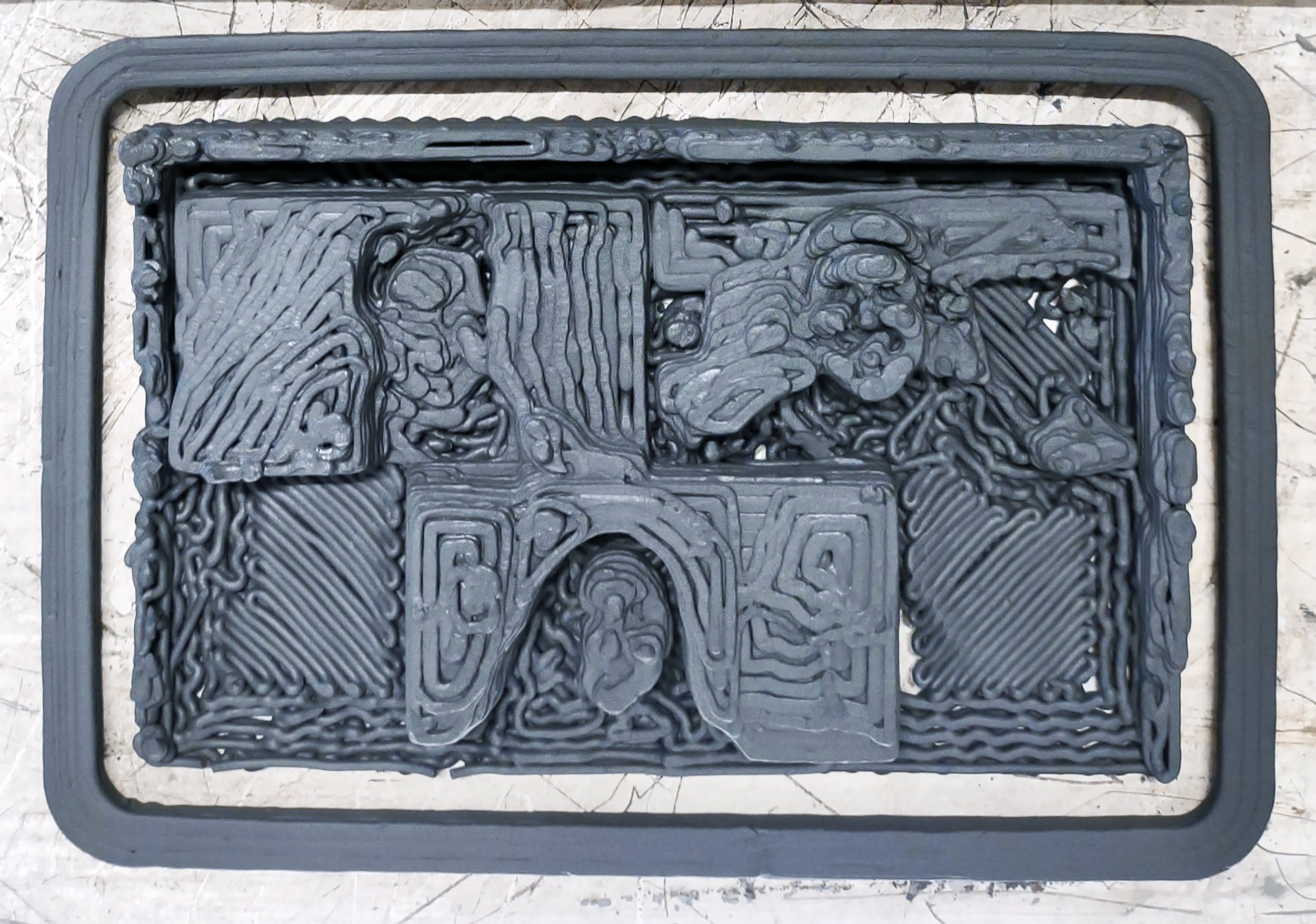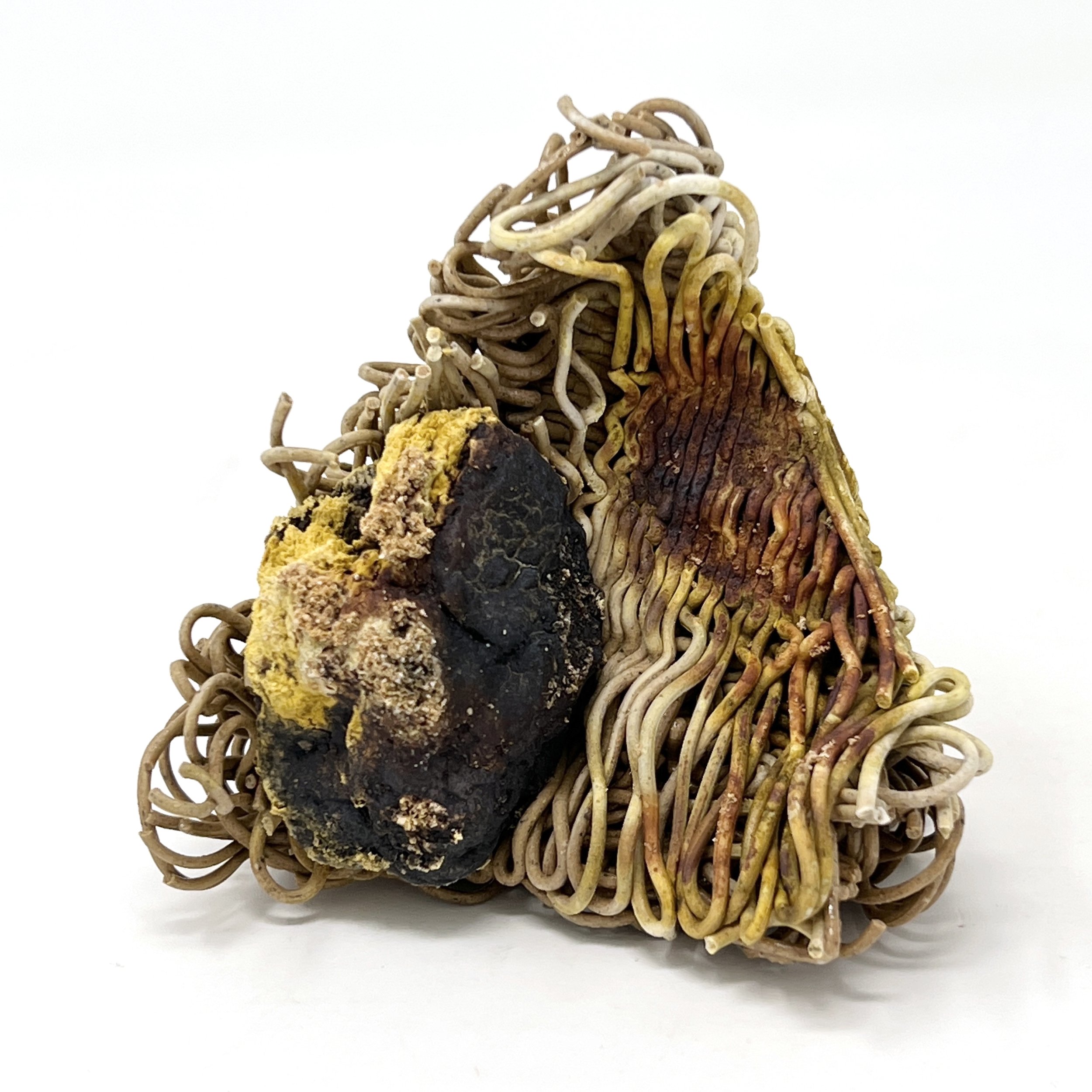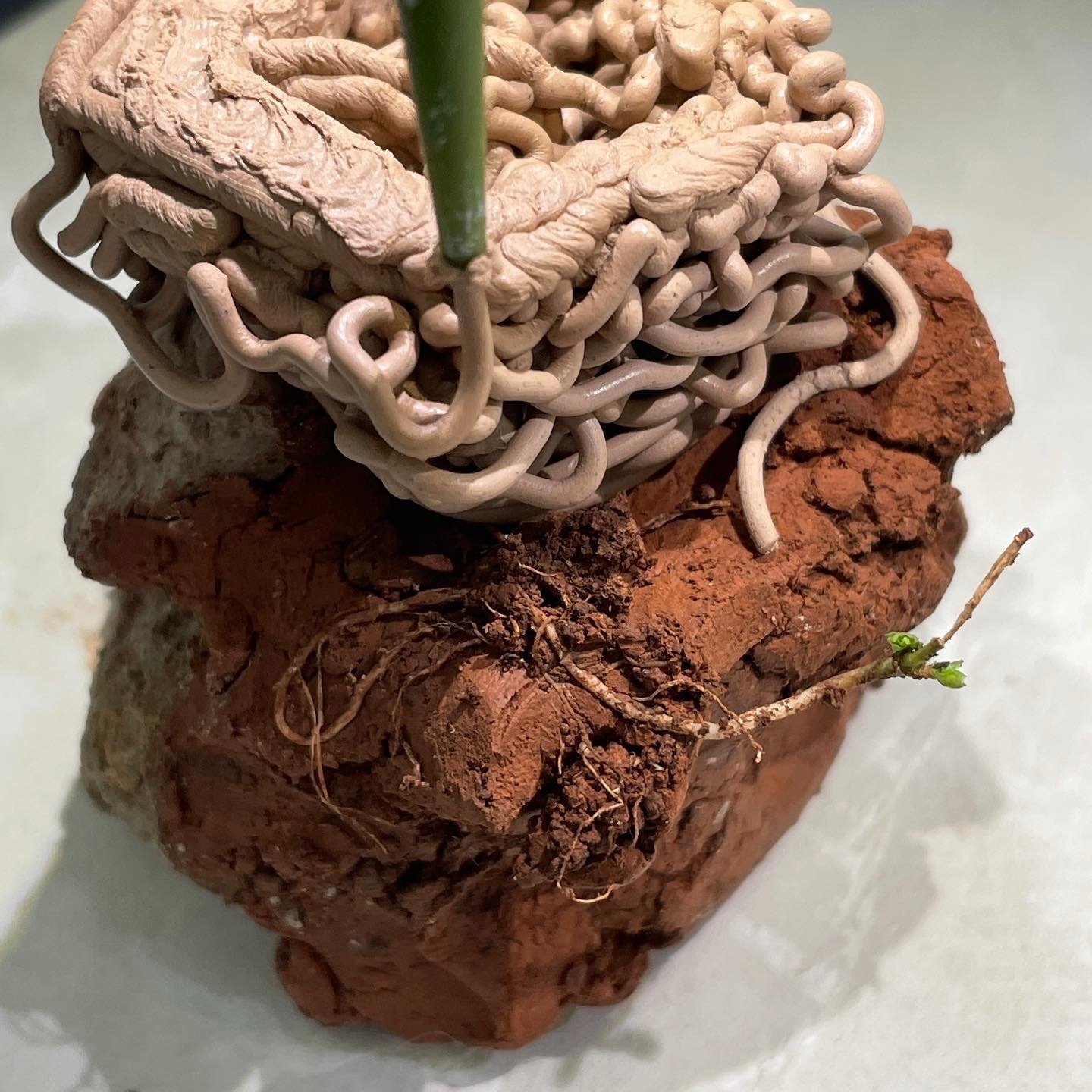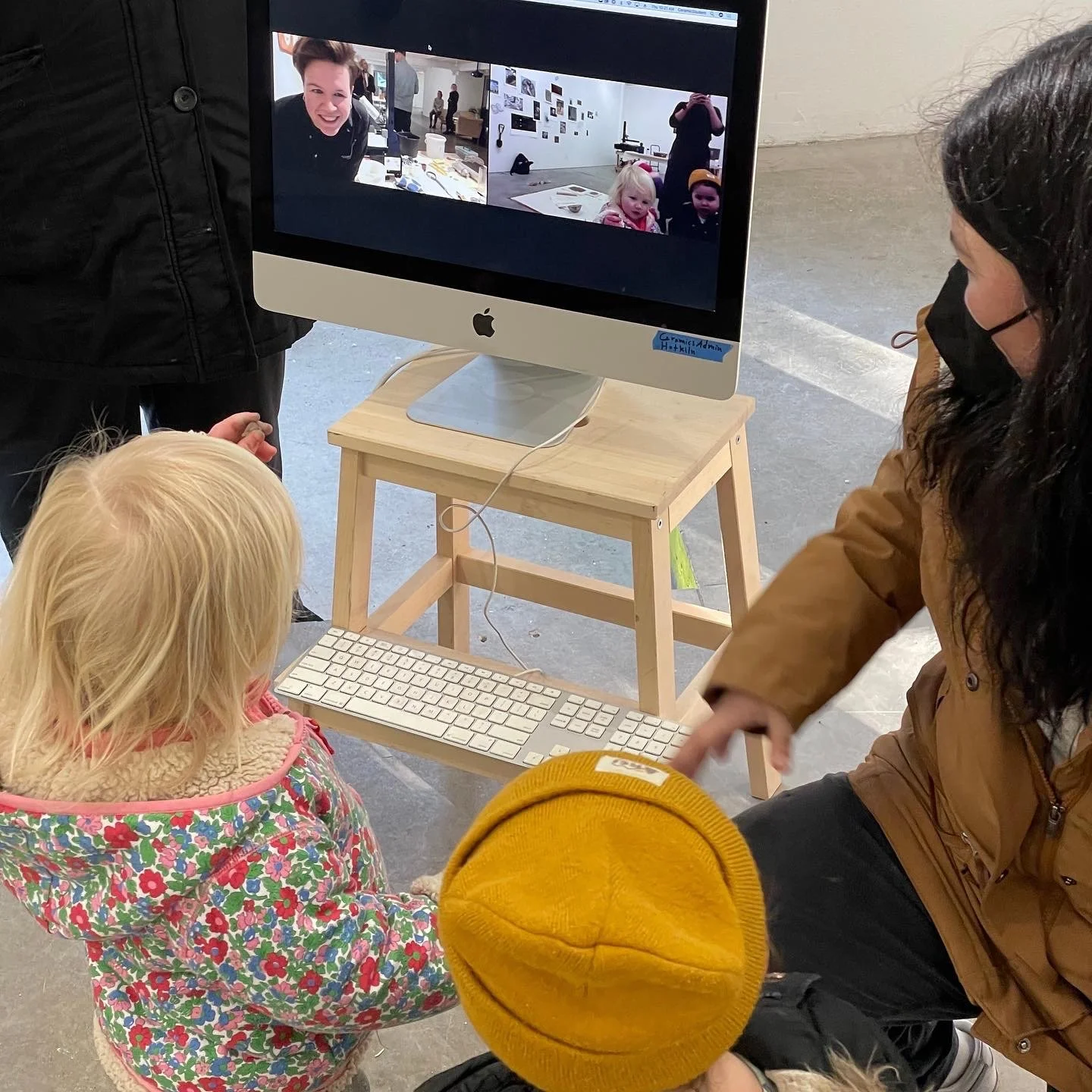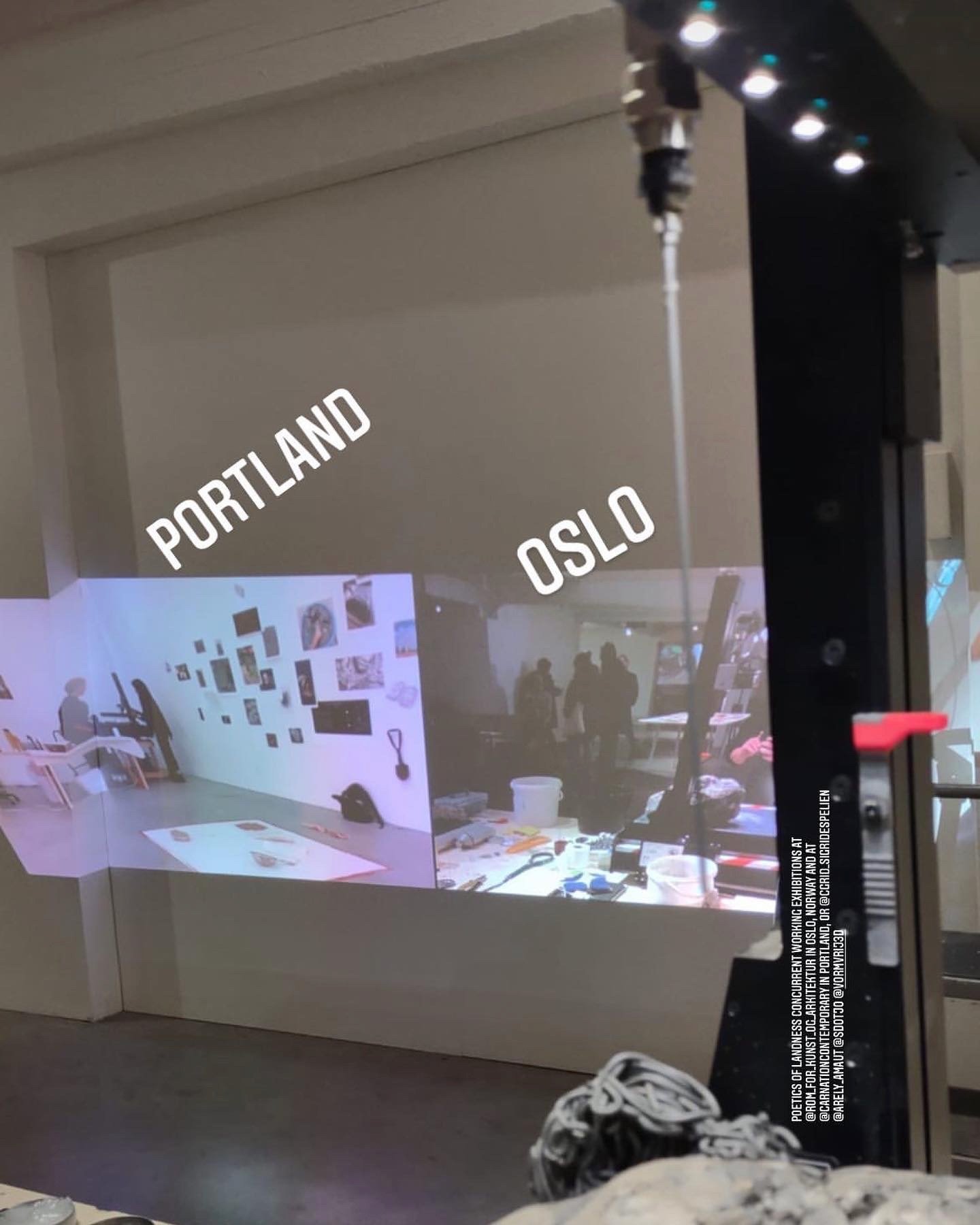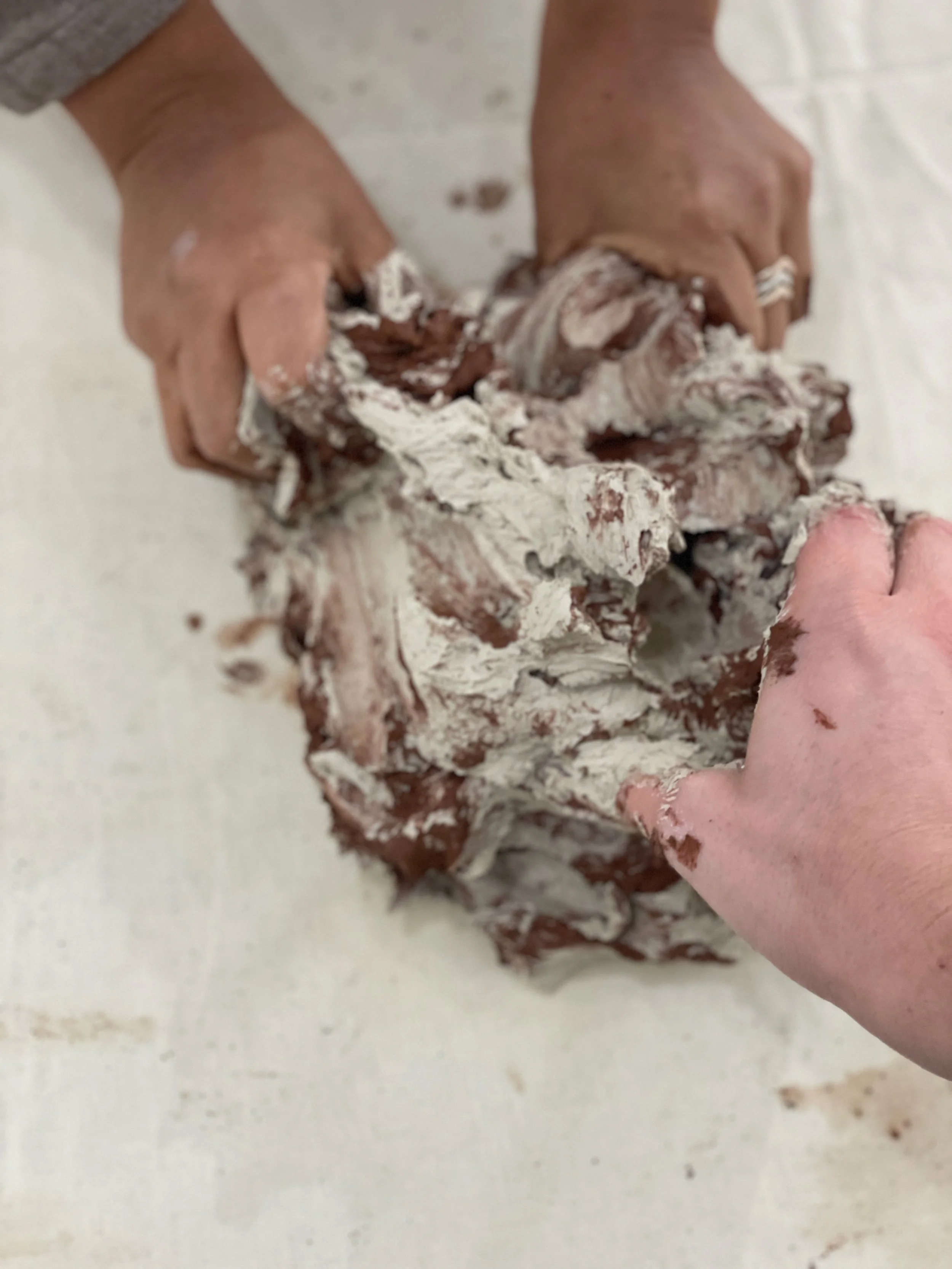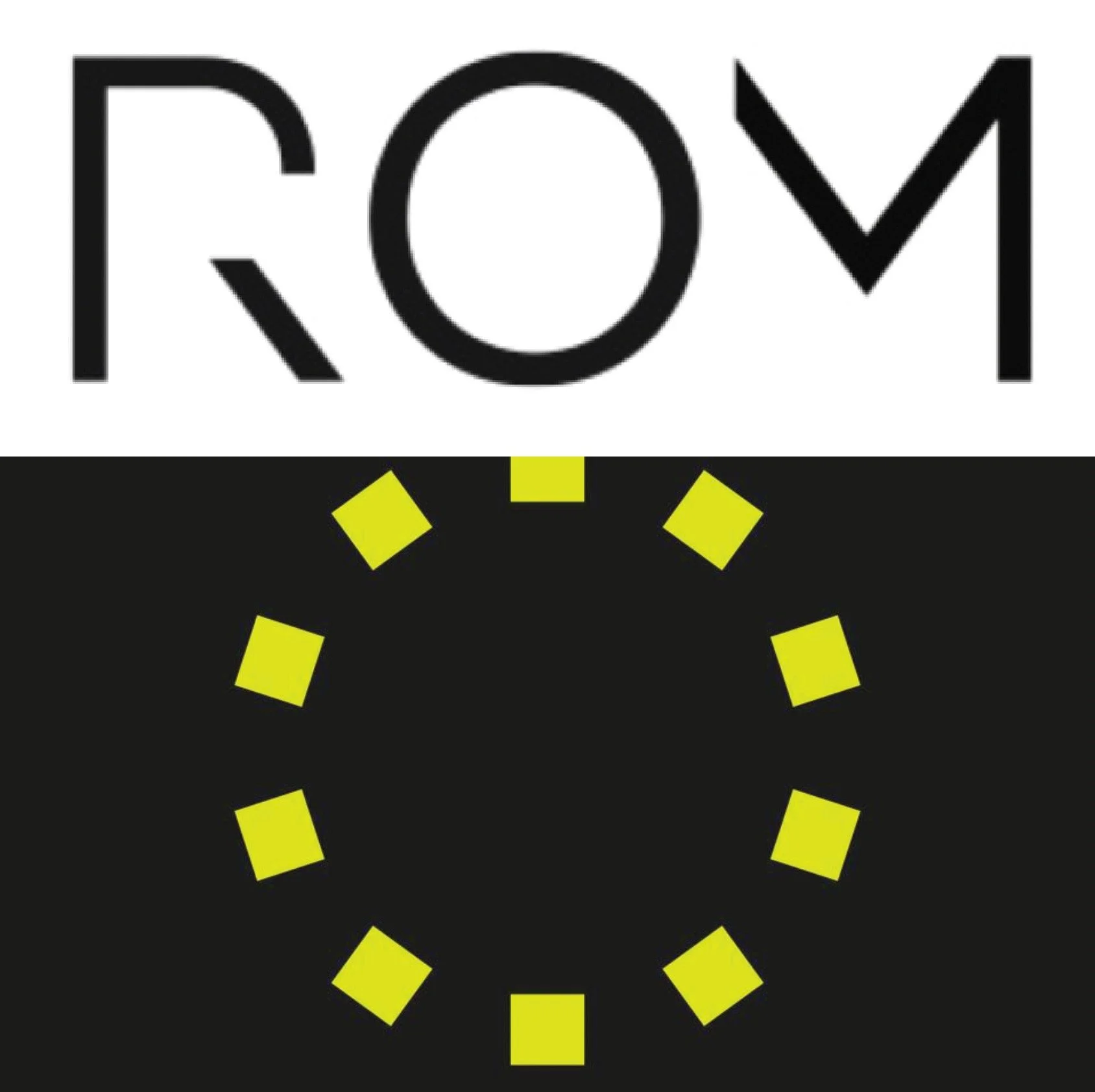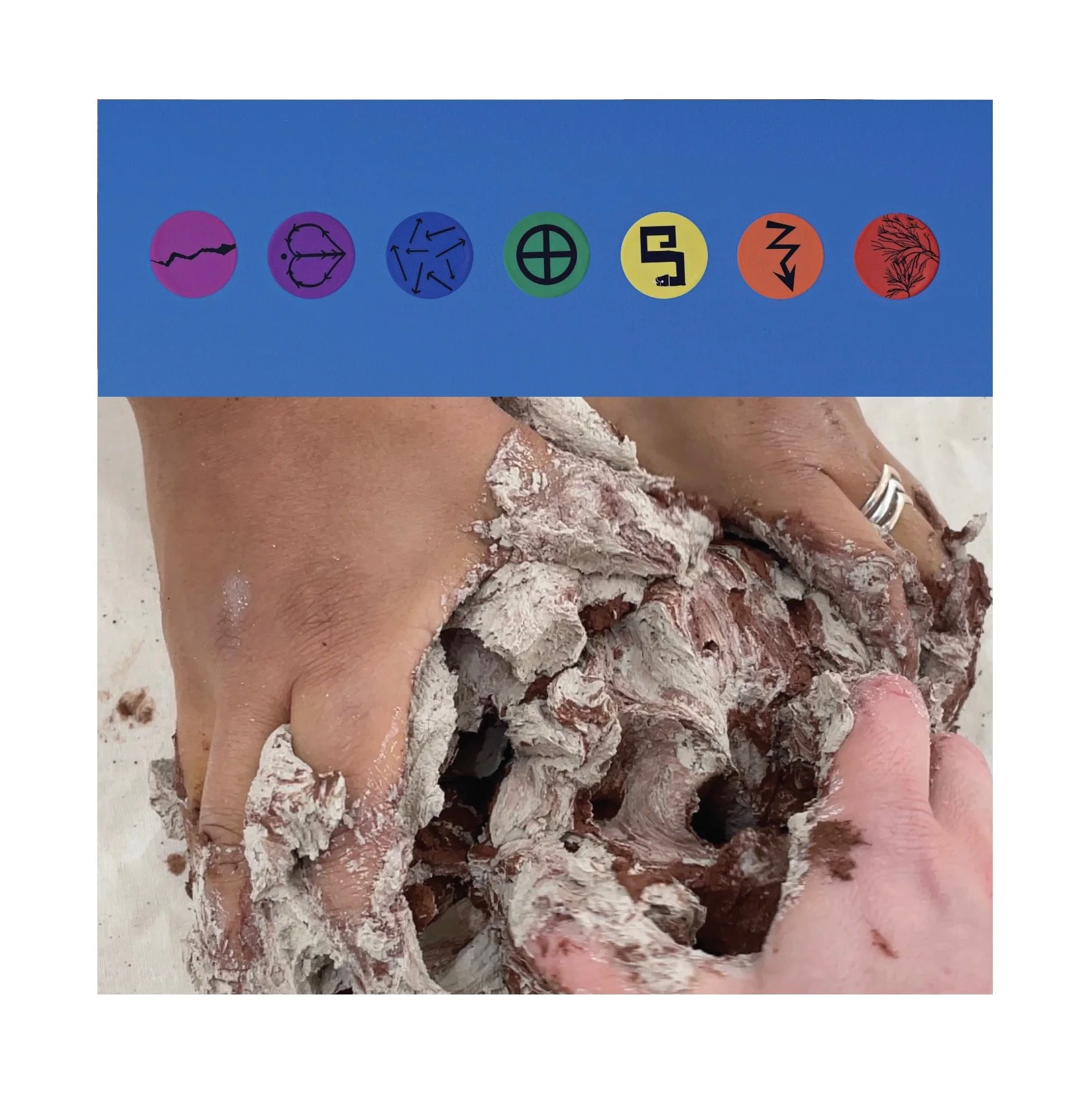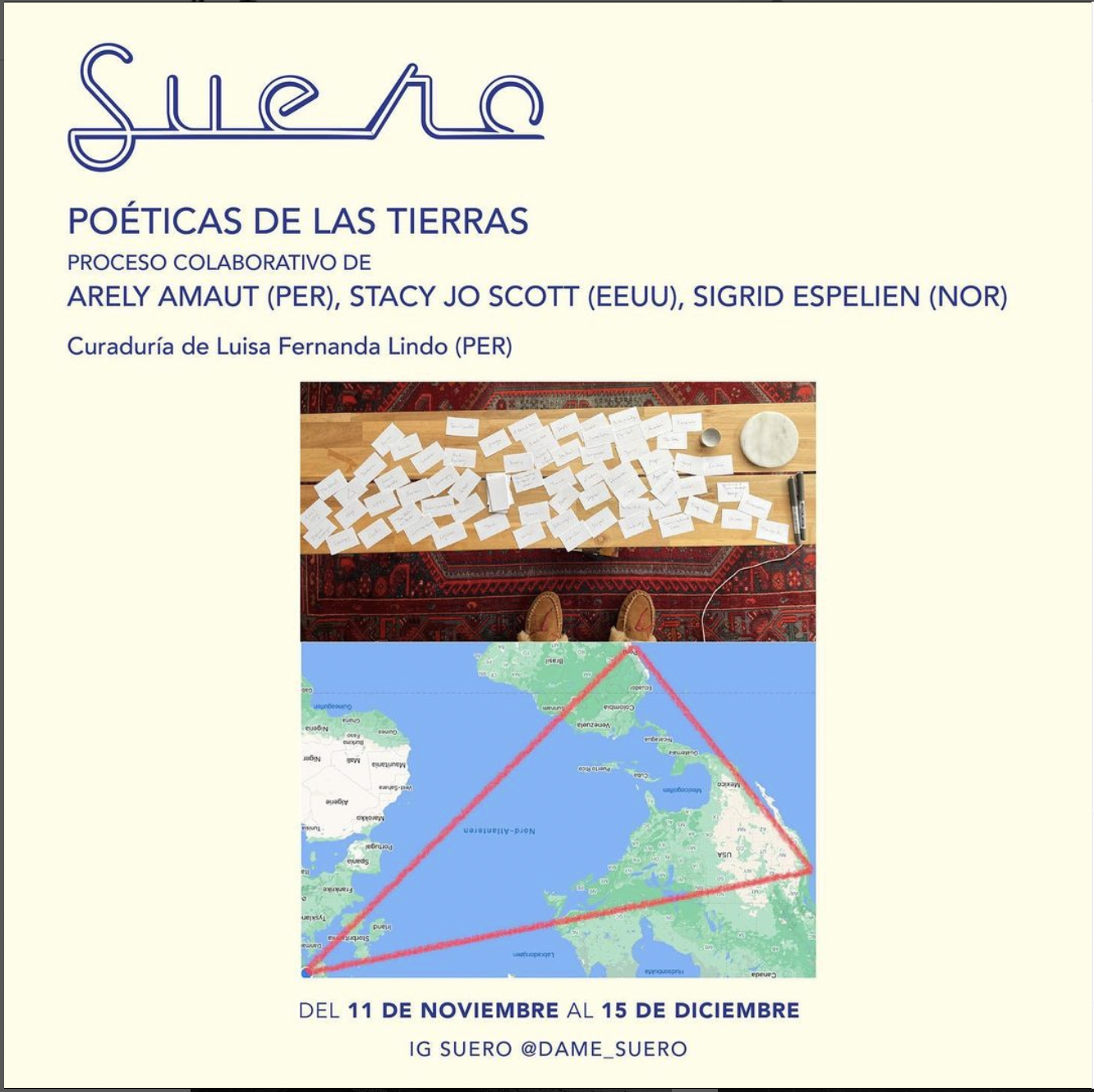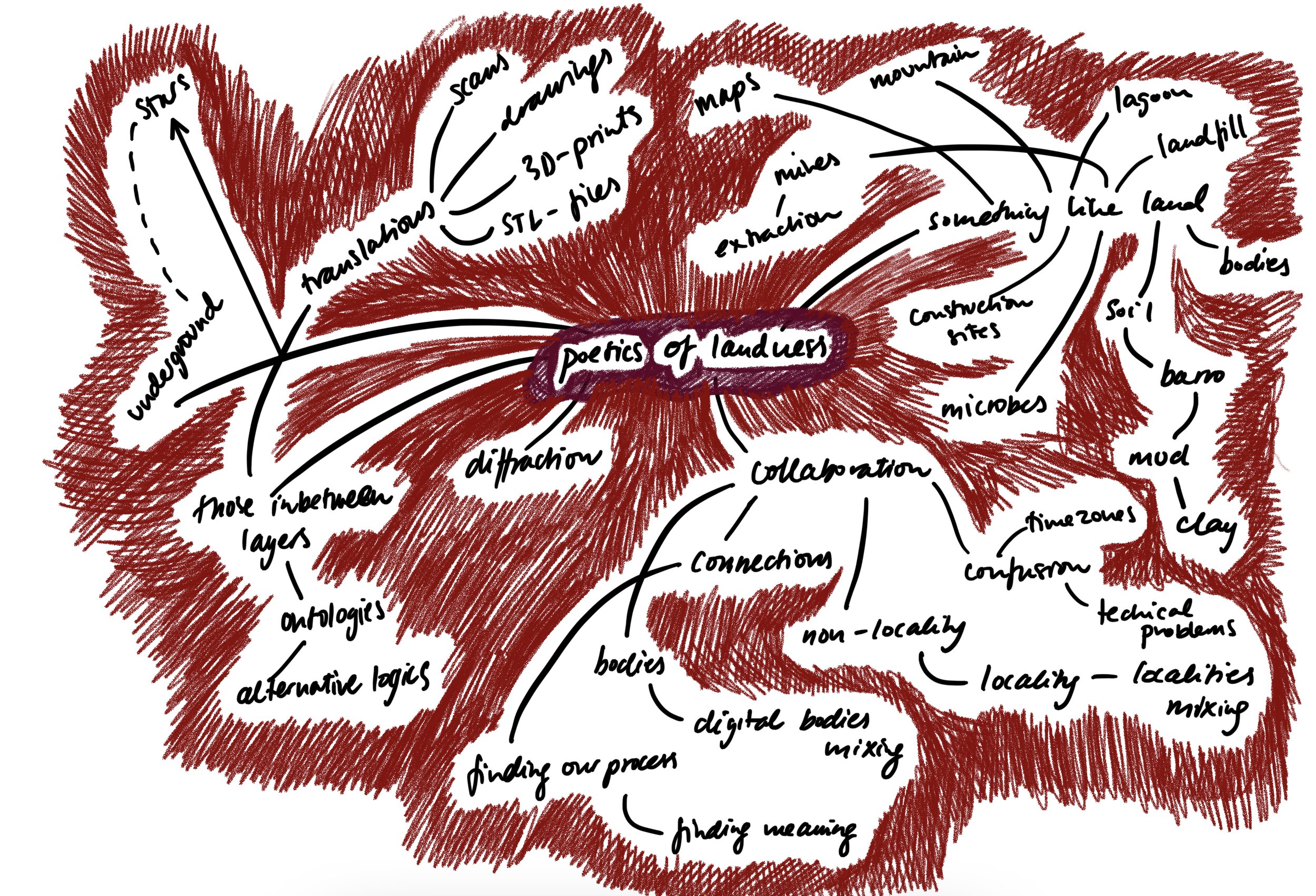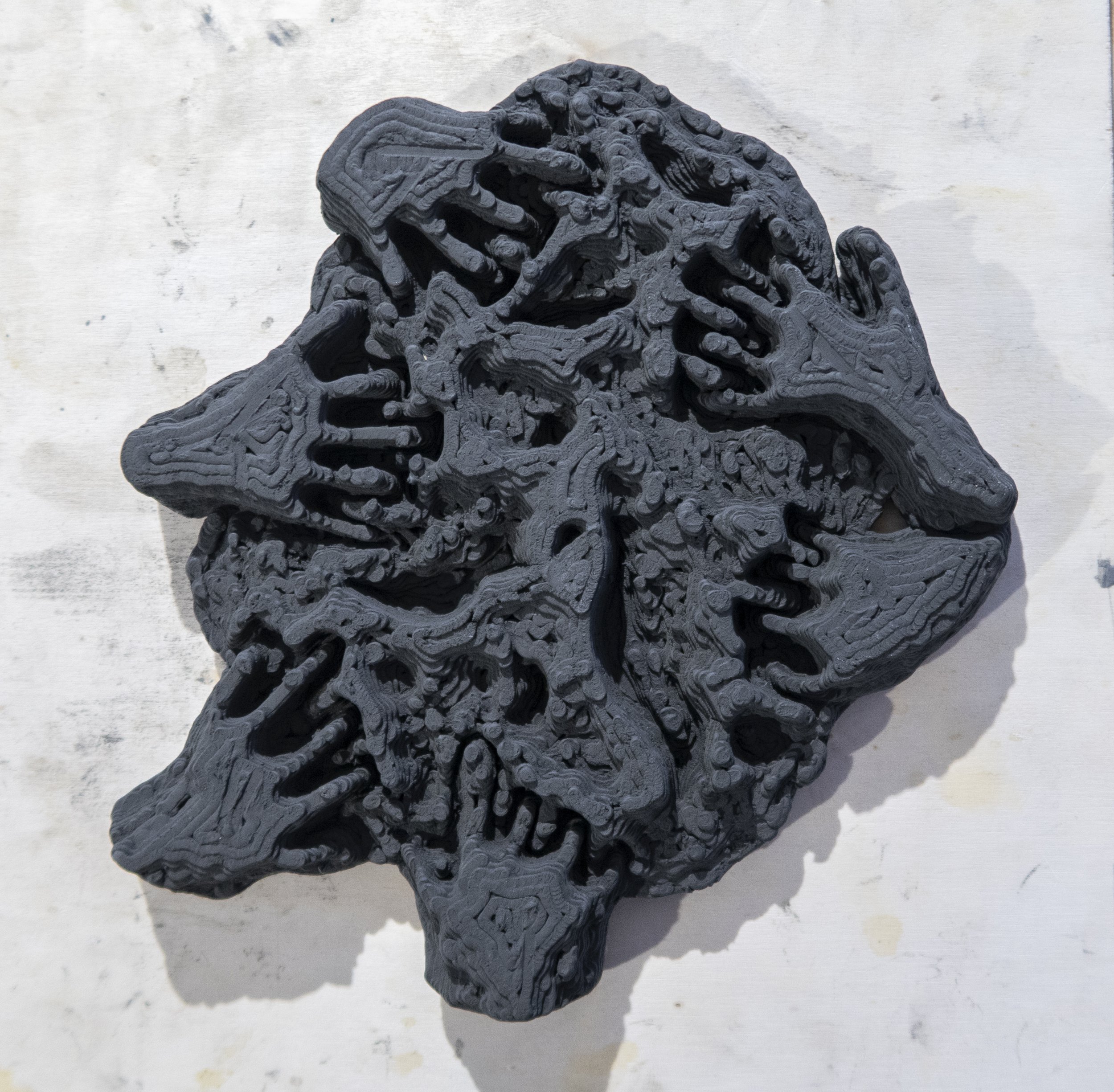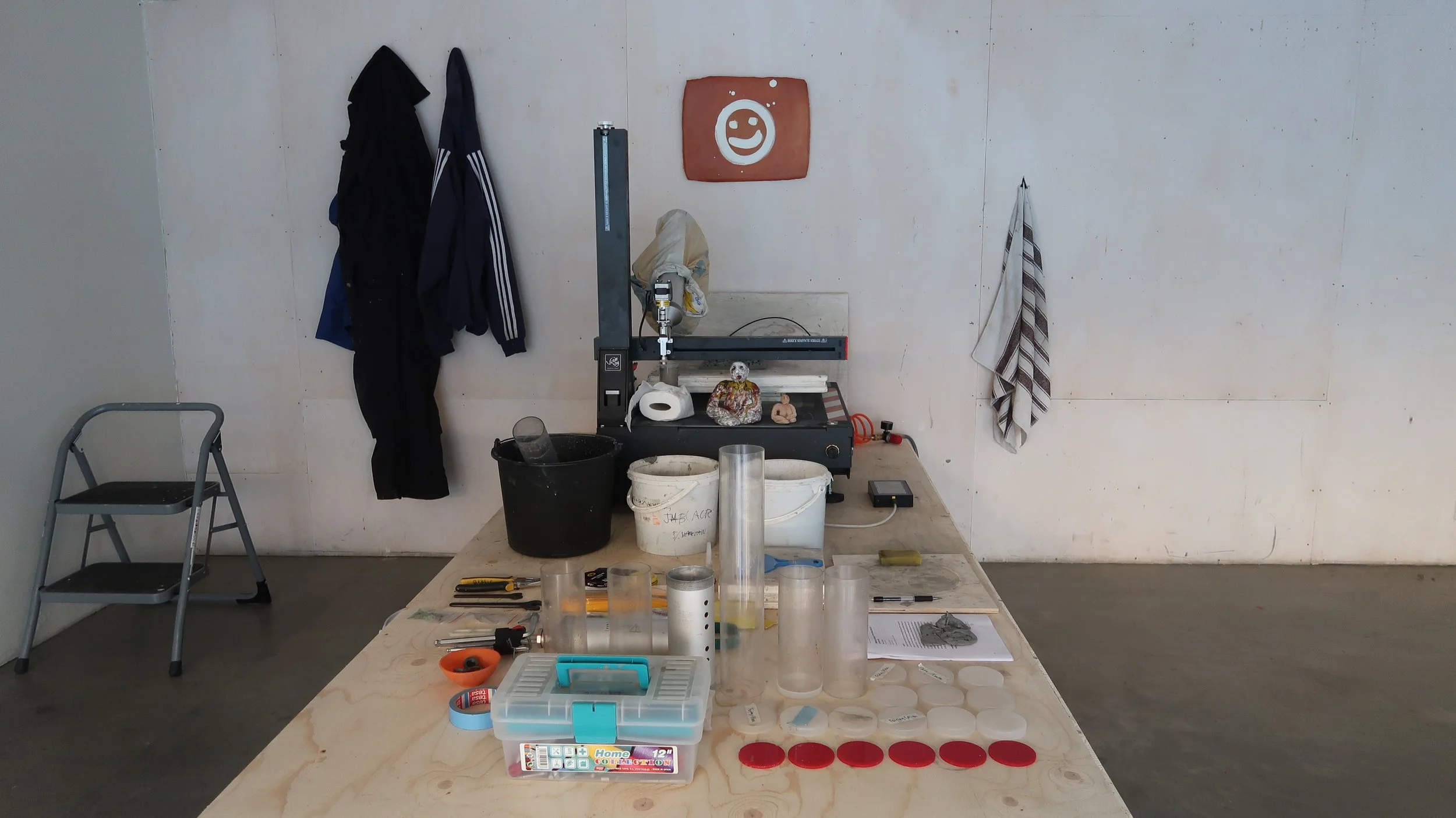POÉTICAS DE LAS TIERRAS / LANDAKTIG POESI / POETICS OF LANDNESS is an ongoing collaboration and exchange platform between Stacy Jo Scott (OR, USA), Arely Amaut (Cuscu, Peru) and Sigrid Espelien (Oslo, Norway). Images here are from three exhibition platforms where we showed our work in progress in November 2021 and January 2022: Suero (Online platform for reflection and creation of contemporary art. Curated by Luisa Fernanda Lindo, Carnation Contemporary, Portland, USA and ROM for kunst og arkitektur, Oslo, Norway.
The ongoing collaboration explores processes dealing with landness, and experiences of the underground.
Landness is about land in action, in becoming, and is not singular or objective. It contains a multiplicity of beings which are part of this becoming - both seen and unseen, sentient and non-sentient. Together we think through ways that unearthing/gathering clay can be “non-extractive”. What does it mean to gather but not to take? How does one land differ from another? Is it only the minerals contained in it? Why would one land/clay be better than another? What does this have to do with the classification given by social power structures?
We consider the ways in which earth, soil, and mud are ancestral beings that bring critical venues for exploration that might help us to listen, remember, and embody. Together we consider the potential of land and creative practice to disrupt the very basis of modern representation and ongoing systematic, colonial violence.
POÉTICAS DE LAS TIERRAS / LANDAKTIG POESI / POETICS OF LANDNESS
〰️
POÉTICAS DE LAS TIERRAS / LANDAKTIG POESI / POETICS OF LANDNESS 〰️
Arely Amaut Gomez Sanchez (born in Cusco, Peru) is a mestizo woman, part of the Quechua Indigenous community. She is a reader, visual artist, graphic designer, architect and remembers the ancestral-digital study. She intersects Andean-Amazonian cosmology, training in architecture, and the embodied study of the principles applied in the Andean ancestral architecture to share the study: "Remembering the future." She conceived in collaboration with the community of Quebrada Verde in Pachakamak the "Radio Apu" (Apu is a Grandfather or Grandmother, the sacred mountains). She collaborates with Sigrid Espelien (Oslo), Tatjana Kolpus (Sámi), Irma Alvarez Ccoscco (Quechua) in the ongoing project "Collective Thinking Machine" "Mapping the unseen" with Liisa-Ravna Finbog (Sámi), with Valentina Desideri and Denise Ferreira da Silva in the "Sensing Salon."
Collectively Arely questions the hidden structures that predetermine our social and political imagination limits. She accompanies processes of repositioning Ancestral memory and embodied practices by remembering that we are interconnected beyond separation and linear time. Remembering that we are the Land, clay, mud, Pacha (space-time). Remembering the Land, the Mountain, the River, as pedagogy, Ancestral tools of healing, reading (oracles), and poetic speculation. Remembering, they create diagrams, videos, drawings, texts that explore decolonial possibilities of imagining and tools to deal with the ancestral forgetfulness and alienation produced by Modernity to rehearse different types of beings beyond the modern subject (Da Silva, The Global Idea of Race). She holds a Master's degree in Art and Public Space from the National Academy of Arts in Oslo. She is currently a Ph.D. student at The Institute for Gender, Race, Sexuality, and Social Justice at the University of British Columbia.
Stacy Jo Scott is an artist and currently an assistant professor at the University of Oregon. She uses ceramic objects and digital processes as anchors from which to navigate shifting landscapes of queerness, embodiment, and spectrality. These objects emerge from research, digital processes, trance practices, and chance operations. Her work revolves around imaging the ephemeral body and speculating on queer lineages and futurities. The speculative nature of her inquiries is grounded in confounding the relationship between clay’s materiality and the supposed purity of machinic code. Stacy Jo explores how digital media renders embodiment, and how computational tools can be used to convey illegible histories or mythic futures. She employs the more ancient skills of hand-working clay alongside generative software tools, unorthodox 3D printing, and CNC hacks. The idiosyncrasies of clay interrupt the numeric logic of the machine, looping it back into a queered transient world of direct embodied experience.

